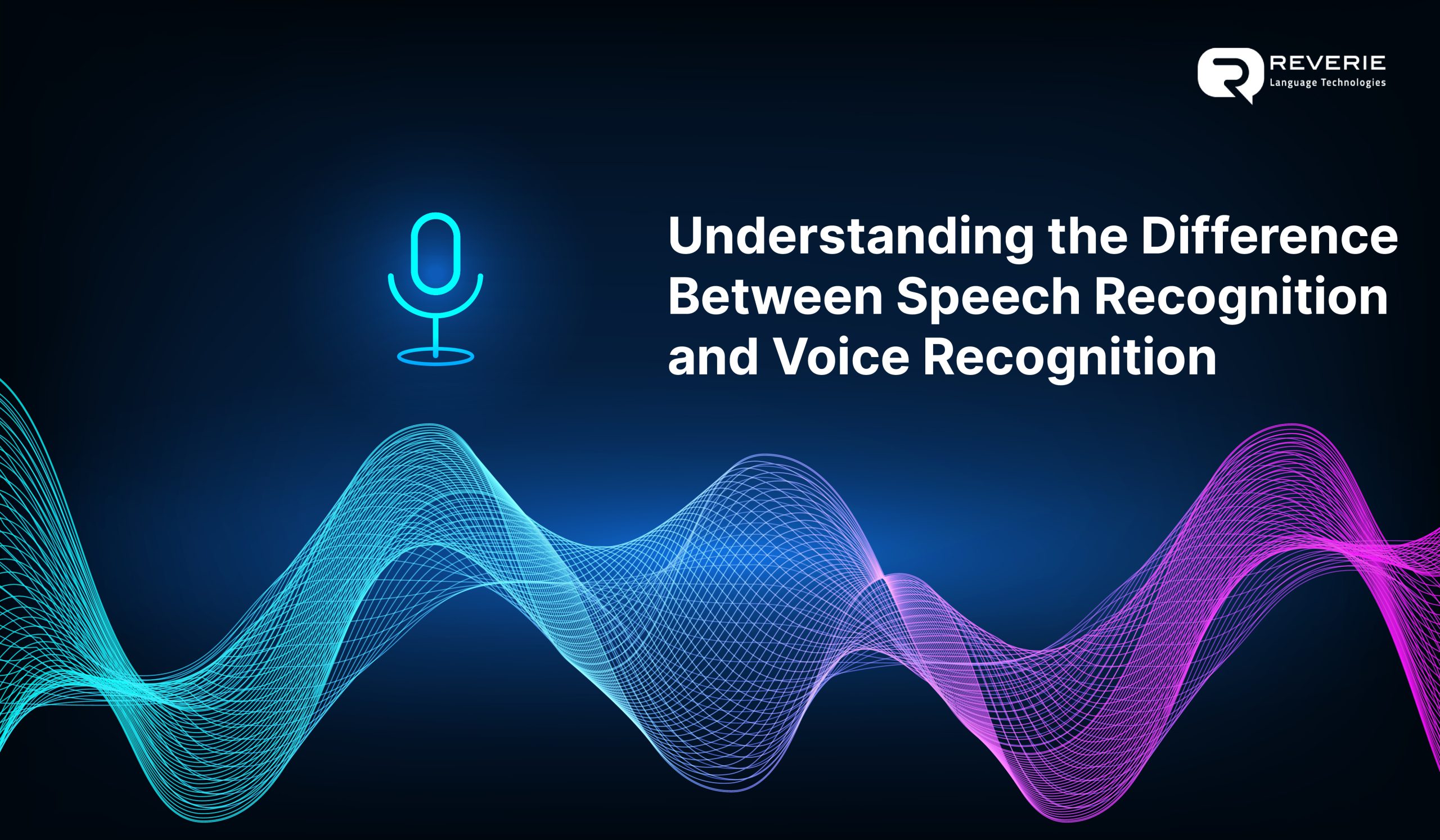“Hey Alexa, turn on the living room lights.” Within seconds, the room lights up, responding to your voice command. Now imagine this, you call your bank, and instead of entering a PIN or password, the system says, “Please say your name.” You reply, and within moments, your voice is authenticated, granting you secure access to your account.
Both scenarios showcase the marvels of modern technology—one using speech recognition to understand what is being said, and the other relying on voice recognition to identify who is speaking. The evolution of technology has enabled machines to communicate with humans more intuitively. Among the cutting-edge advancements, speech recognition and voice recognition have emerged as game-changers.
Did you know?
|
Source: Statista
While often used interchangeably, these technologies serve distinct purposes, and businesses need to understand the difference between speech recognition and voice recognition. Speech recognition focuses on converting spoken language into text, enabling tasks like transcription and voice commands. Voice recognition, on the other hand, is designed to identify the speaker, offering enhanced security and personalisation.
This blog delves into their differences, mechanisms, applications, and benefits, empowering business owners and marketing heads in India to make informed decisions about adopting these tools.
Understanding Voice Recognition: Identifying the Speaker
The next step in understanding the difference between voice and speech recognition is understanding voice recognition and how it works. You can relate voice recognition to a biometric system, but a system that functions for voices. Every voice has unique characteristics or voiceprints, including:
- Pitch
- Tone
- Cadence
- Frequency
Voice recognition analyses these unique vocal characteristics to identify and authenticate individuals. While speech recognition primarily focuses on understanding spoken words, voice recognition’s primary functions involve personalisation and security. In simple terms, it determines “who is speaking” instead of understanding “what is said.” This technology is critical in creating user-specific profiles for smart devices, secure authentication systems, and fraud detection. Reverie’s NLU and voice solutions ensure that businesses in India can handle linguistic diversity effectively, making voice recognition a vital component in delivering secure and personalised experiences.
How Does Voice Recognition Work?
Voice recognition works by creating and comparing digital voiceprints by harnessing the power of advanced AI (Artificial Intelligence) and machine learning. It also involves four primary steps:
- Audio Collection: The process starts when a user speaks, and the system records their voice.
- Feature Extraction: It then analyses the unique features of the voice like pitch, cadence, and frequency.
- Matching: The stored voiceprint is then compared and matched against the pre-registered samples in a database for authentication.
- Authentication: After all three steps, the system identifies the speaker’s identity.
For businesses in India, where diverse accents and dialects are prevalent, robust voice recognition systems ensure high accuracy and security, enhancing trust and user satisfaction.
Applications of Voice Recognition
- Authentication: Used in banking apps for secure logins
- Smart Devices: Personalises user interactions
- Law Enforcement: Identifies individuals from voice samples
- Fraud Prevention: Detects identity spoofing attempts
Voice recognition enhances both security and user experience across applications.
Benefits of Voice Recognition
- Enhanced Security: Mitigates risks of identity theft
- Personalisation: Adapts devices and applications to individual preferences
- Fraud Detection: Prevents unauthorised access through biometric validation
- Scalability: Supports large-scale deployment in diverse environments
Understanding Speech Recognition: Converting Speech to Text
Speech recognition, also known as automatic speech recognition (ASR), is a cutting-edge technology that helps machines convert the words spoken by humans into text. It focuses on understanding language, making it an essential tool for enabling hands-free operations and seamless communication. Businesses leverage speech recognition for transcription, virtual assistants, and customer support automation. Wait, there’s more. Advanced platforms like Reverie’s Speech-to-Text API ensure high accuracy even in multilingual environments. The technology decodes language and delivers accurate results after analysing audio inputs and breaking them into phonemes, improving efficiency and accessibility.
How Does Speech Recognition Work?
The difference between speech and voice recognition lies in their respective contexts and how they work. Speech recognition is the process that combines acoustic models, language models, and advanced algorithms like natural language processing (NLP) and machine learning to understand and analyse speech. There are four primary steps that are followed throughout the process:
- Audio Input: The process begins with audio input in which spoken words are captured via a microphone.
- Signal Processing: The captured audio is then converted into a digital signal for better understanding.
- Pattern Recognition: After the signal is processed, the system identifies and analyses the phonetic patterns using machine learning algorithms.
- Text Conversion: Finally, the system then processes data and matches these phonemes against its database of words and phrases to generate accurate textual representations.
Applications of Speech Recognition
How speech recognition is shaping industries:
- Virtual Assistants: Drives platforms like Alexa and Google Assistant
- Healthcare: Facilitates transcription of patient notes
- Customer Support: Powers automated IVR systems for efficient query resolution
- Education: Assists in language learning and assessments
Benefits of Speech Recognition
Why Businesses Choose Speech Recognition Solutions:
- Enhanced Accessibility: Speech recognition enables hands-free interactions for all users, regardless of their physical abilities.
- Increased Efficiency: Transcription tasks can be time-consuming. Speech recognition automates the process and saves time.
- Localisation Support: With tools like Speech-to-Text API, speech recognition can adapt seamlessly to India’s linguistic variety.
- Cost Savings: It reduces dependency on manual operations, which can be costly.
Difference Between Voice and Speech Recognition: Key Differences
Voice recognition and speech recognition have different purposes and functionalities. Here are some of the key differences between voice and speech recognition:
Aspect | Voice Recognition | Speech Recognition |
| Primary Function | Identifies and authenticates the speaker | Converts spoken words into text |
| Core Focus | Recognising the identity of the speaker | Understanding the content of speech |
| Applications | Secure banking, personalised smart devices | Virtual assistants, transcription tools |
| Technological Basis | Biometric analysis of vocal features | NLP, AI, and machine learning for linguistic and phonetic analysis |
| Primary Use Case | Strengthening security and user personalisation | Enhancing accessibility and communication |
Choosing the Right Technology for Your Business Needs
While speech and voice recognition technologies bring innovation and may seem very similar, there are differences between the two and their functionalities. For businesses, understanding the difference between speech recognition and voice recognition is essential for choosing the right technology for their business needs. These technologies enable accessibility and trust in a linguistically diverse market. With Reverie’s advanced language tools, you can seamlessly integrate these capabilities into your operations, staying competitive and future-ready. To explore more, book a free demo today!
Faqs
What is the core difference between speech and voice recognition?
Speech recognition focuses on transcribing spoken language, while voice recognition identifies or authenticates the speaker.
Can these technologies work together?
Yes, many systems integrate both to provide seamless interaction and security, such as in voice-activated banking apps.
Why are these technologies important for businesses in India?
India’s linguistic diversity and growing reliance on digital platforms make these technologies vital for accessibility, security, and customer engagement.
How does speech recognition benefit education?
Speech recognition facilitates real-time transcription, making online and hybrid classrooms more inclusive and accessible.
Is voice recognition secure for financial transactions?
Yes, voice recognition uses biometric features, offering a secure method for authentication in financial services.


